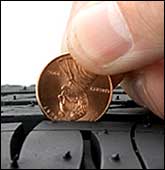To properly address this concern, it’s important to understand the basics of the drive system. 4WD and AWD vehicles allocate the engine’s horsepower to each of the four tires as needed (via a differential) – enabling the wheels to turn at different speeds. “The best system will send exactly the right amount of torque to each wheel, which is the maximum torque that won’t cause that tire to slip.” This is particularly helpful on loose gravel, sand, slippery roads, and other adverse conditions.
Most of us drive our cars without thinking too much about the mechanics of how our car is getting us down the road. When a car is going straight down the road, all four wheels turn at the same speed. When we turn, some wheels have to turn faster than others. Cars that are in All Wheel Drive all the time, have a special center differential that allows the front and rear axles to turn at different speeds when needed for turning corners. Without this component, the car would flip. This center differential isn’t activated all the time, it only kicks in when the axles are spinning at different rates.
Most differential systems are designed to allow short-term differences in wheel speeds when the vehicle turns a corner or spins a tire. If you use mismatched tires (tires of different size or tread depth), you may be forcing the differentials to operate at all times. This will lead to excessive heat and unnecessary wear on the differential, and may cause early failure.
 In fact, studies have shown that differences of just 2/32 of an inch in tire tread between tires on the same vehicle can impact vehicle performance. For example, if you were to replace just two tires on your AWD or 4WD vehicle, you would have a slightly larger diameter on the new tires, due to deeper tread. A small difference in the front and back tire diameter means the two axles are always turning at different speeds, even if the car is going straight down a highway. This is contrary to how the vehicle was designed to operate and will likely lead to early malfunction. If you only replace one set of tires, the other set will be a slightly different size due to the wearing away of the rubber as you drive and brake. You might think it expensive to replace all four tires, when only the front ones have worn out. However, when you consider the cost of replacing or repairing the center differential instead, the new tires are the less expensive option.
In fact, studies have shown that differences of just 2/32 of an inch in tire tread between tires on the same vehicle can impact vehicle performance. For example, if you were to replace just two tires on your AWD or 4WD vehicle, you would have a slightly larger diameter on the new tires, due to deeper tread. A small difference in the front and back tire diameter means the two axles are always turning at different speeds, even if the car is going straight down a highway. This is contrary to how the vehicle was designed to operate and will likely lead to early malfunction. If you only replace one set of tires, the other set will be a slightly different size due to the wearing away of the rubber as you drive and brake. You might think it expensive to replace all four tires, when only the front ones have worn out. However, when you consider the cost of replacing or repairing the center differential instead, the new tires are the less expensive option.
In simplest terms, when tires have a different circumference, they have a different number of revolutions per mile. The smaller the tire (less tread), the more revolutions per mile required. The larger the tire (more tread), the less revolutions per mile. When front and rear axles rotate at different speeds, it creates added strain on the vehicle’s driveline. The greater the difference in the tires’ circumferences the greater the resulting strain. For this reason, it’s essential that 4WD and AWD vehicles use tires that are matched in size. Tire diameter variations can be caused by accidentally using different sized tires, tires worn to different tread depths, tires with different tread designs, tires made by different manufacturers, or even different inflation pressures.
If you own a 4WD or AWD vehicle, you should be aware of the importance of maintaining four matching tires. As always, routine maintenance is your best solution to minimizing potential issues with your vehicle. This includes tire rotations, alignments, maintaining proper air pressure, and monitoring tread depth. “Nearly every U.S. state has a minimum tread requirement for all passenger car tires of 2/32 inch. Driving on tires with tread lower than this minimum depth is not safe or legal.”
We hope this article helps answer some of your questions or concerns on this topic. We realize this can be confusing and frustrating for AWD and 4WD vehicle owners, but we are here to help answer your questions. Safety, and proper vehicle performance and maintenance are top priorities to us. As always your comments are welcome.



No comments:
Post a Comment